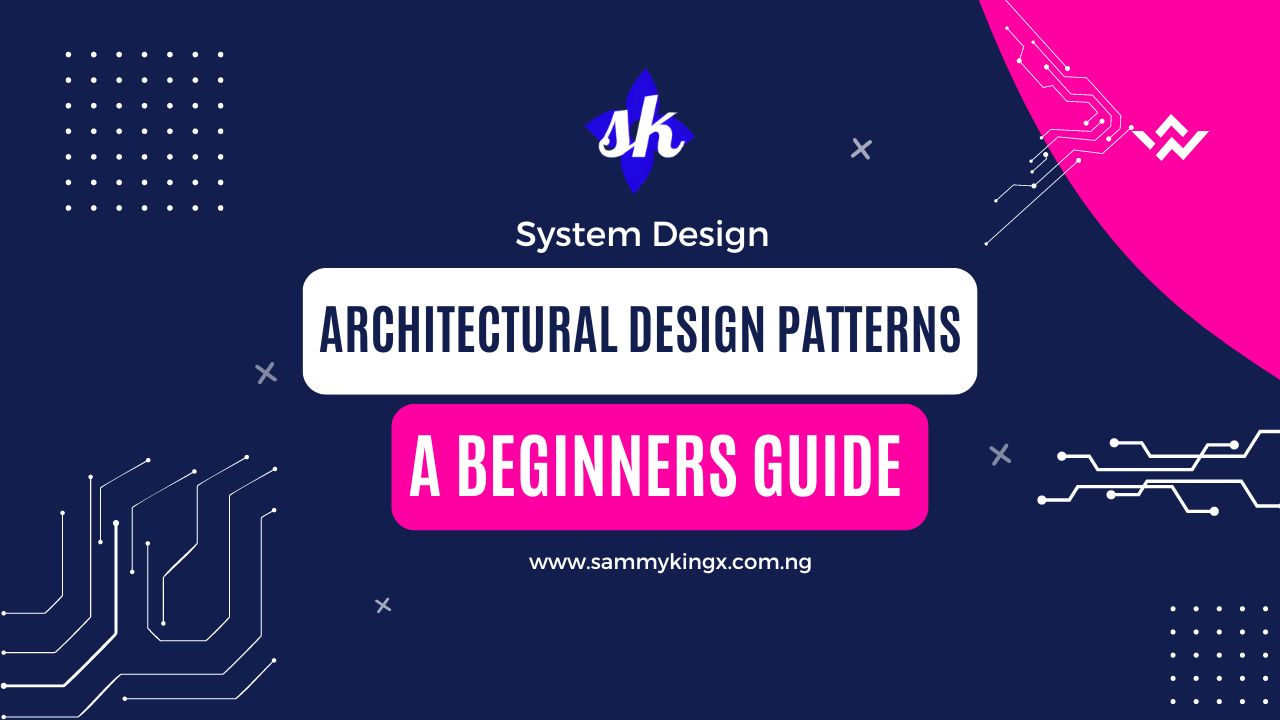Book Appointment Now

Architectural Design Patterns: A Beginner’s Guide
In the field of software development, architectural design patterns play an important role in providing solutions to common design problems that occur in a variety of situations. These patterns serve as reusable blueprints that provide proven and tested approaches to address specific design challenges.
By using these patterns, developers can create systems that are more modular, flexible, and easier to maintain. This comprehensive guide delves into the world of architectural design patterns, examining their meanings, common types, and practical examples.
Understanding Architectural Design Patterns
Architectural design patterns are strategic approaches that guide the high-level organization and structure of a software system. They provide a set of principles and guidelines for addressing recurring design problems, focusing on the allocation of responsibilities among system components and the interactions between them.
These patterns are concerned with the overall architecture of the system, encompassing decisions about the arrangement of components, their relationships, and the distribution of functionality. By applying architectural design patterns, developers can achieve a balance between conflicting design goals, such as flexibility, performance, scalability, and maintainability.
Common Types of Architectural Design Patterns
Layered Architecture
The Layered Architecture pattern involves organizing the system into distinct layers, each responsible for a specific set of functionalities. Common layers include the presentation layer (user interface), business logic layer (application logic), data access layer (data retrieval and storage), and database layer. Each layer has well-defined interfaces and dependencies, with control flowing from the top layer to the bottom. This pattern promotes separation of concerns, modularity, and easier maintenance.
Model-View-Controller (MVC)
MVC is a widely used pattern in user interface design. It separates the application into three main components: the model (data and business logic), the view (presentation layer), and the controller (handles user input and updates the model and view). This separation allows for easier modification and testing of individual components. MVC is commonly employed in web applications, where the view renders HTML, the controller handles HTTP requests, and the model manages the application data.
Client-Server
The Client-Server pattern involves separating the system into client and server components. The client, often a user interface or an application, sends requests to the server, which provides resources, data, or services. This pattern is prevalent in distributed systems, where clients can be desktop applications, mobile apps, or web browsers, and servers can be web servers, application servers, or database servers.
Master-Slave (Master-Worker)
In the Master-Slave pattern, there is a master process that controls and distributes tasks to multiple worker processes. The master assigns tasks to workers, which execute them independently and report the results back to the master. This pattern is useful for parallelizing tasks, handling heavy workloads, or performing distributed computations.
Pipe and Filters
The Pipe and Filters pattern involves a series of independent processes (filters) connected by pipes. Each filter performs a specific transformation on the data it receives, and the output is passed to the next filter in the sequence. This pattern is commonly used in data processing systems, where each filter adds or modifies functionality, and the overall result is achieved by combining multiple filters.
Broker
The Broker pattern introduces an intermediary component, known as a broker, that mediates communication between multiple clients and servers. The broker handles tasks such as routing messages, load balancing, and fault tolerance. This pattern is commonly used in distributed systems, message-oriented middleware, and service-oriented architectures.
Event-Driven Architecture
In an event-driven architecture, the system is designed around the production, detection, consumption, and reaction to events. Events are significant changes in state or behavior that trigger actions or notifications. This pattern allows for loose coupling between components, as they communicate through events rather than direct function calls. Event-driven architectures are commonly used in real-time systems, distributed systems, and asynchronous processing.
Microservices
Microservices is an architectural pattern that involves breaking down a complex application into smaller, independent services, each responsible for a specific business capability. Each microservice has its own codebase, data store, and interfaces, and communicates with other microservices through well-defined APIs. This pattern promotes flexibility, scalability, and easier deployment, as individual services can be developed, deployed, and maintained independently.
Service-Oriented Architecture (SOA)
SOA is an architectural pattern that organizes the system as a collection of services that communicate over a network. Each service provides a specific functionality and exposes a set of interfaces that can be invoked by other services. SOA promotes loose coupling, interoperability, and reusability, as services can be combined and orchestrated to deliver complex business processes.
Applying Architectural Design Patterns
When applying architectural design patterns, it’s important to consider the specific context and requirements of the system. Here are some key considerations:
Understand the problem domain: Identify the specific design challenges and requirements of the system. This includes factors such as scalability, performance, security, and maintainability.
Choose the right pattern: Select the architectural pattern that best addresses the identified challenges. Consider the trade-offs and benefits of each pattern and how they align with the system’s goals.
Define the system boundaries: Clearly define the scope and boundaries of the system, including the interactions with external systems and components.
Decide on the level of granularity: Determine the appropriate level of detail for the architectural design. Consider the complexity of the system and the level of abstraction needed for effective communication and decision-making.
Promote modularity and separation of concerns: Strive for a design that separates responsibilities into distinct modules or components. This enhances maintainability, reusability, and flexibility.
Document the architecture: Create clear and concise documentation that describes the chosen architectural pattern, the rationale behind it, and the relationships between components.
Iterate and refine: Architectural design is an iterative process. Regularly review and refine the architecture based on feedback, changing requirements, and lessons learned during development.
Conclusion
Architectural design patterns provide a valuable toolkit for software developers, offering proven solutions to common design challenges. By understanding and applying these patterns, developers can create systems that are more modular, scalable, and maintainable. In this guide, we’ve explored the significance of architectural design patterns, delved into common types, and provided practical insights into their application. Remember that the choice of pattern depends on the specific context and requirements, and a good understanding of these patterns will enable you to make informed decisions in your software design endeavors.


